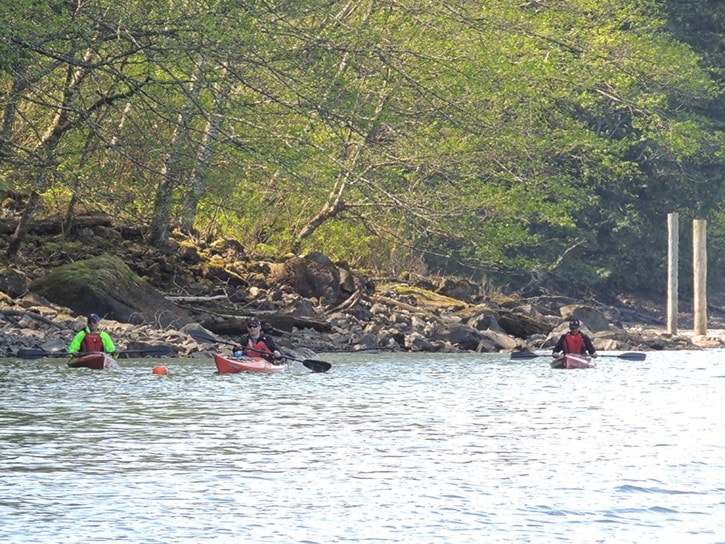As paddlers, it’s perhaps easier than many other recreational boaters to head out on the water once the ice has receded. Just strap it to your vehicle’s roof rack and away you go. To ensure that this outing isn’t spoiled by an emergency on the water, it’s important that we take a few extra precautions before heading out.
A good start is to invite a fellow paddler to come along with their canoe or kayak. That way, you have someone readily available to help out if needed.
Reload all your safety equipment on the boat, to make sure everything is in proper working order and that all pieces of powered equipment have fresh batteries.
The weather can change quickly in early spring. Always check the (marine) forecast to be alerted of incoming weather systems. This is also a good time to realistically assess your paddling skills against potential weather. Don’t be fooled by balmy breezes into dressing in light clothing. The water is still very cold. Either wear or bring along thermal protective clothing that can be layered. A wetsuit or paddling drysuit would be best. That will help slow the onset of hypothermia should you suddenly find yourself in the water.
A key piece of safety equipment is a marine radio or, where service is reliable, a cell phone to call for assistance. At this time of year, there are fewer boats on the water to spot you and help. Cell phones should be kept in a watertight container to avoid potential water damage. Before departing, tell a reliable person where you are going, when you expect to return and the number to call should you not return as scheduled.
As you head out, be sure to wear your lifejacket. With the number of styles available today, some specifically designed for paddlers, there really is no reason not to wear one. It might just save your life.
Finally, make sure you have practiced and are skilled enough to quickly re-board your boat both assisted and unassisted in the case you capsize or fall into the water.
There is no reason why, with a little preparation, we can’t indulge our passion and take full on-water advantage of the paddling season from ice off to ice up.
For more safe boating tips, visit www.csbc.ca.
- The Canadian Safe Boating Council & Paddle Canada
